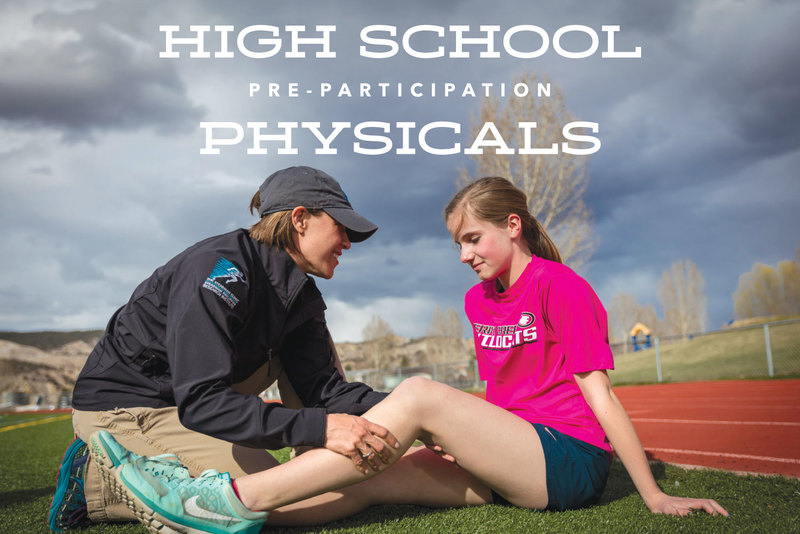News
New Tech Powers Research Care
This article was written by Scott Miller and originally posted by the Vail Daily on January 282016.
In part of the institute is a robot that looks like it could be putting windshields into Buicks in a factory. But this machine is very slowly manipulating a human knee which once belonged to a person who decided to donate his or her body to science after death.
Alex Brady who runs the robot said this particular work is studying the different structures in the knee and how those structures respond to different forces and stresses.
In the adjacent room Justin Mitchell a research associate and surgeon is working on another knee simulating surgery on a live patient.
Such work pays dividends beyond the halls of the medical center.
Institute chief of staff Kelly Adair said what's learned in these labs is published in scientific and medical journals around the world. In fact about 4 percent of all the scientific articles published in the American Journal of Sports Medicine originate from these hard-to-find labs in Vail.
Just up the hall in a room that once was used to capture athletes' movement for 3D computer simulations there's now a lab dedicated to helping humans heal faster. Amid the monitors and racks of samples researcher Andi Liebowitz manipulates blood samples examining those samples at the genetic level. At that level a patient's blood and tissue can be saved before surgery and used during recovery to help that patient heal faster.
It's all part of the future and those research facilities will be upgraded with the medical center's renovation.
In other parts of the medical center the right-now is helping save people with up-to-the-minute technology.
In a room not much bigger than a closet Dr. Wayne Wenzel coordinates the medical center's various imaging technologies. There are a number of ways to scan body parts but one of the most common is the CAT scan. Wenzel said the equipment at the medical center is about the best available save for the machines at some pediatric hospitals.
From his small office Wenzel can communicate in real time with technicians in Vail of course but can also communicate with technicians and doctors at several Denver-area hospitals.
The medical center's scanners are sophisticated enough to understand the density of tissue being scanned which means patients are exposed to only enough radiation to do a thorough job.
Those scanners are also fast enough to scan the human heart as it beats. That can help doctors understand why a patient may have chest pains or shortness of breath. That scanner speed can also lead to quick referrals to what may be the medical center's technological centerpiece.
For Eck who helped bring Wenzel to the Vail Valley the scanning power and diagnostic power available is far far beyond the X-rays on light boxes once used to spot fractures and tumors.
The cath lab
Elsewhere downstairs are a couple of rooms that house the medical center's cardiac catheterization lab known as the cath lab. There technicians can diagnose and repair a patient's heart problems on the spot.
Giving a demonstration lab director KC Baker pulls up a file of a recent procedure. Lying on the table in the lab's main room a patient has a tiny catheter inserted into his or her arm or thigh. From there a wire just .014 of an inch in diameter is run into the patient's heart. From that tiny wire dye is injected into the heart allowing real-time tracking of how the dye is distributed through that muscle.
In the file that Baker shows the small tour group it's easy to spot the dye hitting a restricted area in one blood vessel of the patient's heart.
This is a definitive diagnosis Baker said adding that the constriction shown on the screen is often called the widow-maker.
While the patient was still on the table immediate treatment was available. The tiny wire can be used to deliver tiny inflatable balloons to re-inflate the blood vessel. In some cases a tiny plastic stent can be sent to open the blockage.
The lab was busier than usual during a week in mid-January with seven patients coming in for diagnoses.
Those patients can be visitors since the thinner air of Vail can reveal problems that aren't apparent when someone is at sea level.
Medical center CEO Doris Kirchner said that the lab and its people have saved eight lives since the facility opened in February of 2015.
Eck along with Dr. Tom Steinberg spent countless weekend days patching up broken skiers in a crowded room. He's also lived through days of sending patients to Denver in ambulances driving snow-covered roads. Some made the trip in time. Others didn't. What's available to patients now means more of those patients will heal faster or live to tell the tale of a medical close call.
It's really amazing he said.
More News
-
New!
More

Vail Health and The Steadman Clinic Offer Free Physicals for High School Athletes
Physicals will be offered in both English and Spanish on two dates, May 17 at Battle Mountain High School and May 24 at Eagle Valley High School.
-
New!
More

Good Stress?
“Good stress” sounds like an oxymoron. After all, we’ve always been told stress is bad for our health. However, it’s possible that some stressors can actually be good for us and even enhance our lives.
-
More

Considering Cosmetic Procedures
As we age, our skin loses its elasticity and can leave some feeling less confident in their physical appearance. Cosmetic procedures can empower individuals to enhance their self-esteem and improve their overall quality of life.
